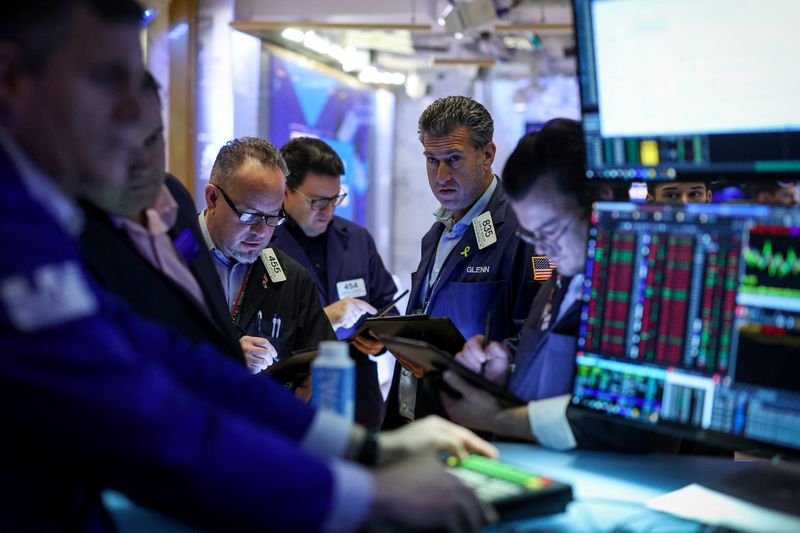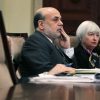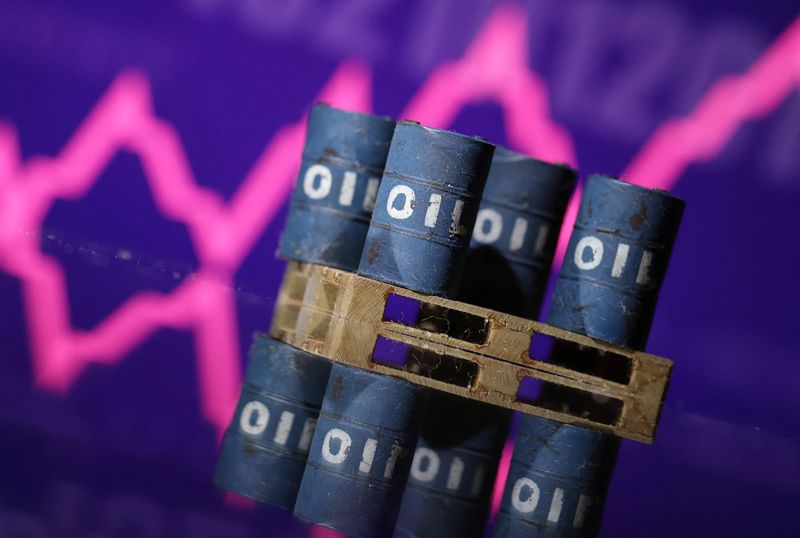
By Jamie McGeever
ORLANDO, Florida (Reuters) -After two years of significant underperformance by bonds, investors may have a hard time swallowing claims that 2025 will be the “year of the bond”. But there are compelling reasons to believe this will be a case of third time lucky.
Fixed income assets, particularly U.S. Treasuries and other government bonds, have struggled to recover from the historic pounding they took in 2022, when central banks hiked interest rates to quell the burst of inflation that followed the pandemic and Russia’s invasion of Ukraine.
The last time Treasuries posted double-digit annual gains was 2008, when the ICE BofA U.S. Government Bond Index returned 14%. Treasuries eked out modest gains in 2023 and 2024, and corporate bonds performed notably better, but both trailed the S&P 500’s sizzling 24% and 23% gains by a wide margin.
Wall Street has survived – and indeed thrived – despite elevated borrowing costs, thanks to resilient U.S. growth and the AI boom. But bonds have badly lagged, creating a narrative that they are a poor investment when interest rates are high.
This narrative has gained acolytes as U.S. debt and deficit dynamics have deteriorated. Washington’s interest payments, borrowing and spending are all elevated, and many investors are skeptical the Trump administration will get public finances in order.
Little wonder then that the ‘term premium’ is the highest in a decade. That’s the compensation investors build into the 10-year Treasury yield for taking the risk of lending to Uncle Sam over the long term rather than rolling over short-term loans.
This is why Treasuries are no longer a natural hedge against a potential equity selloff. Or so the narrative goes.
HIGH YIELDS? NO PROBLEM
Chris Iggo, chair of the AXA IM Investment Institute, disagrees. A look back at the past 40 years suggests bond yields at current levels are associated with positive total returns over the following 12 months. Iggo notes that the Bloomberg Aggregate U.S. Government Bond Index has delivered positive monthly total returns 90% of the time since 1985 when the yield on the index has been 4.6% or higher.
Some recent history supports this view. The cost of credit in the decade before the Global Financial Crisis was notably higher – the 10-year yield mostly fluctuated in a 4-7% range, and real yields and the term premium were consistently more elevated than they are today.
Yet the ICE BofA U.S. Government Bond Index doubled in value and delivered positive returns in all but one of these years. The S&P 500 index also doubled but had to ride out three straight years of double-digit annual losses, during which time it halved in value.
The post-GFC, bond-friendly era of zero interest rates may be over, but that does not mean bond investors should be fearful. Liquidity is ample, default risk is low, investors can earn attractive income, and demand is high – look at the record demand at French and Spanish debt sales this week.
COMPELLING
Capital flows show investors still believe in bonds. U.S. bond funds drew record inflows of $435 billion last year, according to TD Securities. That trend could certainly continue this year, given the strength of global demand for U.S. fixed income, juicy yields and the strong probability that the U.S. economy will continue to enjoy a soft landing.
What’s more, bonds appear cheap by many measures. Analysts at Citi calculate that the selloff in U.S. Treasuries over the last month is in the 85th percentile going all the way back to 2000.
This is especially true in relation to equities. The ‘equity risk premium’ – the earnings yield on the S&P 500 minus the 10-year Treasury yield – is the lowest in a quarter of a century and negative in certain cases.
Even in the investment grade corporate bond market, where spreads are historically tight, it’s a similar picture. Angel Oak Capital Advisors estimate that the S&P 500 earnings yield is almost two percentage points below the average return for the Bloomberg U.S. Corporate Investment Grade Index, the biggest gap in decades.
Investors burned over the last two years may be suspicious of yet another bond bull call – for valid reasons, namely inflation, the public finances and uncertainty surrounding many of the Trump administration’s proposed policies. But the third time truly could be the charm.
(The opinions expressed here are those of the author, a columnist for Reuters.)
(By Jamie McGeeverEditing by Christina Fincher)

































